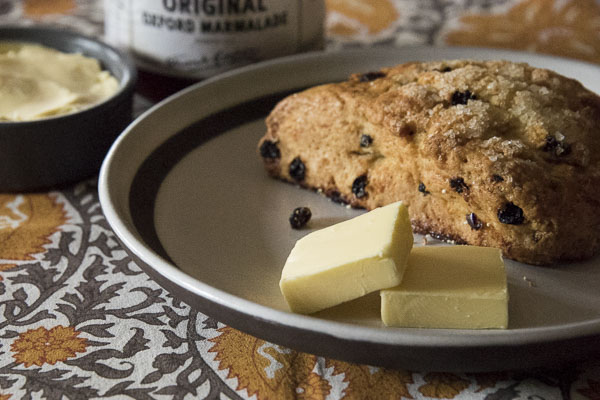We’ve been hearing ad nauseum about border walls, but who knew there were butter walls? Even some folks in Wisconsin are just now realizing that their state—“America’s Dairyland”—has an impenetrable fat fence. No immigrant butters from France, Italy or Ireland, or any other foreign country, are permitted on Wisconsin grocery-store shelves. At least one Kerrygold fan has resorted to driving to a neighboring state to score some Irish butter. I’m a Kerrygold enthusiast, too, but my laid-back state (California) lets me have all I want, no questions asked.
I learned about the butter ban, which is not new, from a recent television report. By Wisconsin law, any butter sold in the state has to be graded by a licensed Wisconsin grader. USDA-graded butters get a pass, but imported butters aren’t graded by the USDA. So no imported butter.
“It's very annoying, but it's been like this for many, many years,” Wisconsin cheese authority Jeanne Carpenter told me in an e-mail.
Introduced to the U.S. in 1999, Kerrygold is the nation’s most popular imported butter brand. The milk for it comes from an Irish co-op with 14,000 farmers, and the brand specs require that the milk come from grass-fed cows. The ingredient list is nice and short: pasteurized cream and salt for the salted version; cultured pasteurized cream for the unsalted. No butter flavoring, no added color.
Vermont Creamery cultured butter
I buy the unsalted style only. It is smooth and spreadable right out of the fridge, and it has a subtle sour-cream flavor that I like. Butterfat content is 80 percent, not the 82 percent (or more) in the so-called European-style butters. The costly cultured butter from Vermont Creamery ranks even higher at my house, but it’s relegated to special occasions.
I wanted to understand why Kerrygold was more malleable than other butters when cold. The brand manager didn’t know and the technical team in Ireland would not comment, so I turned to Elaine Khosrova, author of Butter, A Rich History.
“I’m a geek about the texture of butter,” admits Khosrova. “When I see butter with really beautiful texture, it’s kind of thrilling.”
Many big producers put the cream through a tempering process that alters the fat structure, Khosrova says. Crystalline fats produce a harder butter; liquid fats yield a more greasy butter. The goal of tempering is to adjust that ratio to get a butter that’s spreadable but not greasy.
She also told me about a modern technique that some producers use to make “cultured” butter. Instead of actually culturing the cream before churning—a process that can take up to 24 hours—they churn the butter from sweet cream and then add lactic flavoring to give the butter a cultured taste.
If you want to purchase honest-to-gosh cultured butter, Khosrova suggests looking for the phrase “vat-cultured” or “naturally cultured” on the label. American artisan producers like Vermont Creamery and Sierra Nevada do it the old, slow way.
And what brand does she buy? “I’m always trying new ones,” says Khosrova, “but I do try to get grass-fed butter for everyday because the micronutrients are definitely better. My fallback is Organic Valley Pasture Butter because I can get it in the small town where I live. If I lived in a city, I’d be mixing it up quite a bit.”
March Class: Northern California All-Stars
NEW Point Reyes Gouda: on the menu for All-Stars class
Monday, March 13
5:30 p.m. to 7:30 p.m.
Silverado Cooking School, Napa
Discover what the most talented local cheesemakers are up to in this sit-down guided tasting. We’ll sample several of the best new arrivals plus a favorite classic or two. There’s a reason cheesemakers everywhere look to Northern California for inspiration. We’ll drink local, too.



